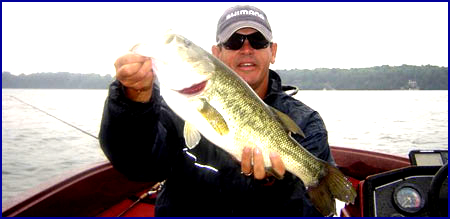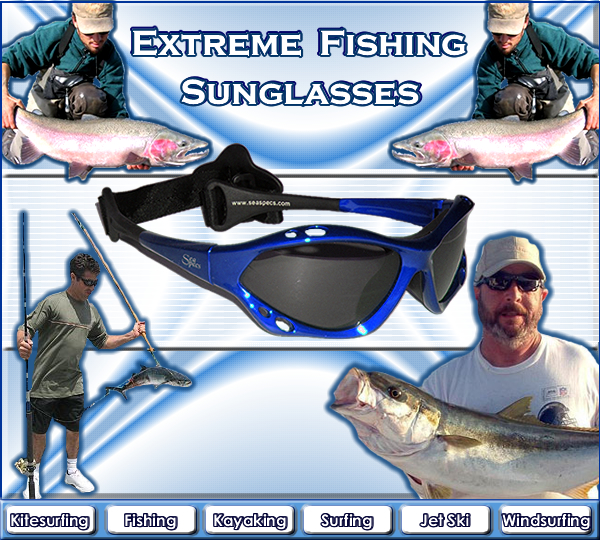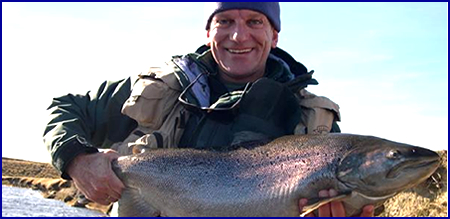| |
Fishing
Fishing is so diverse in its approach, yet covers all age groups and genders. Ocean fishing brings along with its excitement great anticipation. Trolling for sail fish in the deep blue ocean presents the opportunity for extreme fishing. When a sail fish is caught your adrenalin begins racing throughout your body and you feel arms strength pull as your legs give you support for battle. This is extreme sport fishing. In your mind you’re reminded what to expect and how to handle this new challenge of power before you. When all is said and done the victory is yours and now you take that momentous picture with your sail fish.
Still there are those who enjoy the comforts of the back woods on a small creek or river slowly drifting in a canoe getting that early morning start, fishing for their breakfast. Fly fishing technique is recognized around the world. This method of casting and reeling in your catch has competitors moving from rivers, lakes, and many different oceans. Proper fishing gear such as rod, reel, weights, hat and even sunglasses are a must before setting out. The best fishing sunglasses are polarized with UVA and UVB protection. Nature will become your guide from dawn to dusk.
There are many types of strategies as there are people who fish. People have been developing and perfecting their technique from generation to generation. This has allowed for the game fishing industry to maintain a vibrant presence throughout all age groups. From a father who teaches his son or grandson, to the professional that showcases his trophies all can agree on the beauty and majesty of the first catch. Fishing has a way of drawing you close, teaching you about where we came from and where we are going.
Remember from the beginning of time, man has managed to harness the environment in order to sustain a way of life. Where fishing was once done for survival or enjoyment, it has now become commercialized. Natural structure has given way to business that can produce volumes of fish in a timely manner, who can also reach across oceans. This industry provides us with delicacy, from remote parts of the world which would have never been able to reach had it not been for modern technology. Interesting enough the blend between the two under proper management will serve well for both nature and big business.
Extreme fishing will bring excitement to all ages. Many families plan their vacation around this activity. Having the proper equipment for your vacation will lessen the burdens and will enhance your enjoyment. Individual polarized fishing sun glasses are important for protection from the sun. Other people need ploarize prescription fishing sun glasses. Many families plan their vacation around this activity. Parks and recreational facilities provide the perfect outdoors environment for different water sports, such as fishing, kayaking, windsurfing and kitesurfing. All these extreme water sports create something for everybody without infringing nature. Fishing is an ancient and worldwide practice with various techniques and traditions which has been transformed by modern technological.
|
| |
Sport fishing methods vary enormously according to the area being fished, the species being targeted, the personal strategies of the angler, and the resources available, ranging from the aristocratic art of fly fishing to the high-tech, incredibly expensive methods used to chase marlin and tuna. However, in virtually every case, the fishing is done with a rod and reel rather than with nets or other aids.
In the past, sport fishers, even if they did not eat their captures, almost always killed them to bring them to shore for weighing. However, pressure from outside combined with genuine concern about fish stocks have seen many sport fishers releasing their captures alive, usually after fitting them with identifying tags and recording their details so as to aid fisheries research (known as tag-and-release).
Sport fishing competitions give competitors (individuals if the fishing occurs from land, usually teams where conducted from boats) a specified time and area to where they are to catch fish from. Scores are awarded for each fish caught, the points depending on the fish's weight and species, and then divided by the strength of the fishing line used (so catching fish on thinner, weaker line scores additional points). In tag-and-release competition a flat score per fish, divided by the line strength, is awarded for each species caught.
All up and down the east coast of Florida has a great kingfish fishery where anglers can expect to do fairly well. The bag limit is just 2 fish per person; however we believe this is the perfect limit to help conserve this fishery.
When fishing for kingfish the bait of choice is usually live bait such as a pilchard or threadfin herring. You will always want to use about 6 to 12 inches of wire on a single J hook.
Generally the depth of choice is 90 to 120 feet of water although king mackerel can be caught much shallower and much deeper. We find that the bigger fish can sometimes hold in 200 feet of water near an edge with good bait and water clarity.
Fish this rig in the rod holder with a few pounds of drag so when the fish hits, all the angler has to do is pick up the rod and start reeling.
Some professionals claim that treble hooks are the way to go, however we do not like them here at SFC as they tend to foul hook fish you would normally release and kill fish with gut hooks and such.
If the bite is not too strong you can consider going to monofilament leader for more bites, however we recommend you hook the bait fish in the nose and slow troll with drag for this method. You want the fish to hit this bait and get nothing but hook in the corner of the mouth.
If not even a slow trolled bait with mono leader is working, than it is time to bring out the jig rod. You can jig a small pilchard jig up and down throughout the deep depths and find the fish. It is hard for a kingfish to refuse a bait that is working all zones.
|
| |
Why polarized sun glasses are helpful when fishing?
We have seen the importance of having the proper fishing eye wear. The reflection of the sky, sun and many times just nature’s beauty will leave you dazzled. In any professional sport we find many athletes are aware of the proper protective eye wear in order to perform at their peak. Sport fishing is no different, an angler knows his or her favorite tricks of the trade that produces a slight edge over their competitor. Just like the best fly fishing sun glasses, fishing tackle, fishing lure to ensure his/her readiness knowing this will insure he or she is brings their “A” game.
Ultra-light Rods
These rods are used to fish for smaller species, provide more sport with larger fish, or to enable fishing with lighter and smaller lures. Ultra-light rods are generally shorter (4 to 5.5 feet is common) lighter, and more limber than normal rods. Tip actions vary from slow to fast, depending upon intended use. These rods usually carry 2 to 6 pound (9 to 27 N) test fishing line. Some ultra-light rods are capable of casting lures as light as 1/64th of an ounce. Originally produced to bring more excitement to the sport, ultra-light fishing is now widely used by trout, bass and panfish anglers as well.
Fly Fishing
Fly Fishing rods are long, thin, flexible rods sometimes made of split bamboo, but more recently from man-made materials. As their name indicates, fly rods are designed to cast a fly. Instead of a weighted lure, a fly rod uses the weight of the fly line for casting, and lightweight rods can cast the very smallest and lightest fly or lure. Fly rods tend to have a single, large-diameter line guide (called a stripping guide), with a number of smaller looped guides (snake guides) spaced along the rod to help control the movement of the relatively thick fly line. To aid in the freedom of movement required to cast with a fly rod, there is usually little to no butt (handle) extending below the fishing reel. Although fly rods are mainly used for casting, they can also be used for trolling. The World Fly fishing championship title is currently held jointly by Johanna Fewtrell and Michael Garrett, both from the UK. See Fly fishing
Ice Fishing Rods
These are typically very short spinning rods, varying between 24 and 36 inches in length, used to fish through holes in the cover ice of frozen lakes, rivers and ponds.
Surf Rods
Surf fishing rods resemble spinning rods with much larger proportions. Generally between 10 to 14 feet (3 to 4 m) in length, surf fishing rods need to be larger and more robust in order for the user to get the lure beyond the breaking surf. Shallow water and low visibility of surf break zones means that fish tend to congregate just beyond this area. Some people can use surf rods to cast six ounces of lead weight, artificial lures, and/or bait hundreds of feet.
Jigging Rods
Jigging rods are traditionally very thick spinning rods which are used to bounce heavy artificial lures or weighted bait on or near the ocean bottom. Very heavy line is used in ocean jigging in order to reach the ocean floor through strong currents. To counter act this, jigging rods need to be stiffer and with a larger diameter than spinning rods used for casting or in fresh water applications. Bottom fish such as halibut and cod require a jigging rod. Jigging is also widely practiced in fresh water for crappie, walleye, or other species, often with light or ultra light spinning gear.
Cane Poles
Normally, these are fabricated from long, slender pieces of bamboo. They are often used for jigging or bait fishing in calm water, allowing the angler to reach out across small ponds without disturbing the fish.
History of fishing rods and rod design.
Judging by stone inscriptions, fishing rods go back to ancient Egypt, Greece and Rome. Prior to widespread availability of synthetic materials, such as fiberglass and graphite composites, fishing rods were typically made from split Tonkin bamboo, Calcutta reed, or ash wood, as it was necessary that they be made light, tough, and pliable. The butts were frequently made of maple, with bored bottom; this butt outlasted several tops. Handles and grips were generally of cork, wood, or wrapped cane. Guides were made of simple wire loops or, later, loops with ring-shaped agate inserts for better wear. Even today, Tonkin split-bamboo rods are still popular in fly fishing.
Rods for travelers were made with nickel-silver metal joints, or ferrules, that could be inserted into one another forming the rod. Some of them were made to be used as a walking cane until needed for sport. Since the 1980s, with the advent of flexible, yet stiff graphite ferrules, travel rod technology has greatly advanced, and multi-piece travel rods that can be transported in a suitcase or backpack constitute a large share of the market.
In theory, an ideal rod should gradually taper from butt to tip, be tight in all its joints, and have a smooth, progressive taper, without 'dead spots'. Modern design and fabrication techniques, along with advanced materials such as graphite and boron have allowed rod makers to tailor both the shape and action of fishing rods for greater casting distance, accuracy, and fish-fighting qualities. Today, fishing rods are identified by their weight (meaning the weight of line or lure required to flex a fully-loaded rod) and action (describing the location of the maximum flex along the length of the rod).
Modern fishing rods retain cork as a common material for grips. Cork is light, durable, and tends to transmit rod vibrations better than synthetic materials, although EVA foam is also used. Reel seats are often of graphite-reinforced plastic, aluminum, or wood. Guides are available in steel and titanium with a wide variety of metal alloy inserts replacing the classic agate inserts of earlier rods.
|
| |
Hand fishing
It is possible to fish with minimal equipment by using only the hands. In the USA catching catfish in this way is known as noodling. In the British Isles, the practice of catching trout by hand is known as trout tickling; it is an art mentioned several times in the plays of Shakespeare .
Trout binning is a method of fishing, possibly fictional, performed with a sledgehammer.[7]
Divers can catch lobsters by hand.
Pearl diving is the practice of hunting for oysters by free-diving to depths of up to 30 m.
Hand-line fishing is a technique requiring a fishing line with a weight and one or more lure-like hooks.
Catching fish by hand is currently illegal in the United States in the state of Kansas.
Spear and bow fishing
Spear fishing is an ancient method of fishing and may be conducted with an ordinary spear or a specialised variant such as an eel spear or the trident. A small trident type spear with a long handle is used in the American South and Midwest for "gigging" bullfrogs with a bright light at night, or for gigging carp and other fish in the shallows.
Traditional spear fishing is restricted to shallow waters, but the development of the speargun has made the method much more efficient. With practice, divers are able to hold their breath for up to four minutes and sometimes longer; of course, a diver with underwater breathing equipment can dive for much longer periods.
Bow fishers use a bow and arrow to kill fish in shallow water from above.
Fishing nets
All fishing nets are meshes usually formed by knotting a relatively thin thread. Modern nets are usually made of artificial polyamides like nylon, although nets of organic polyamides such as wool or silk thread were common until recently and are still used in certain areas.
A small hand net held open by a hoop and possibly on the end of a long stiff handle has been known since antiquity and may be used for sweeping up fish near the water surface. Such a net used by an angler to aid in landing a captured fish is known as a landing net. In England, hand netting is the only legal way of catching eels and has been practised for thousands of years on the River Parrett and River Severn.
A casting net is circular with a weighted periphery. Sizes vary up to about 4 m diameter. The net is thrown by hand in such a manner that it spreads out on the water and sinks. Fish are caught as the net is hauled back in.
Coracle-fishing is performed by two men, each seated in his coracle and with one hand holding the net while, with the other, he plies his paddle. When a fish is caught, each hauls up his end of the net until the two coracles are brought to touch and the fish is then secured.
The Chinese fishing nets (Cheena vala) found at Kochi in India are an example of shore operated lift nets. Huge mechanical contrivances hold out horizontal nets of 20 m or more across. The nets are dipped into the water and raised again, but otherwise cannot be moved.
A seine is a large fishing net that may be arranged in a number of different ways. In purse seine fishing the net hangs vertically in the water by attaching weights along the bottom edge and floats along the top. A simple and commonly used fishing technique is beach seining, where the seine net is operated from the shore. Danish seine is a method which has some similarities with trawling.
Trawling is a method of fishing that involves actively pulling a fishing net through the water behind one or more boats.
A gillnet catches fish which try to pass through it by snagging on the gill covers. Thus trapped, the fish can neither advance through the net nor retreat.
Ghost nets are nets that have been lost at sea. They may continue to be a menace to wildlife for many years.
Dredging
There are types of dredges used for collecting scallops or oysters from the seabed. They tend to have the form of a scoop made of chain mesh and they are towed by a fishing boat. Scallop dredging is very destructive to the seabed, and nowadays is often replaced by mariculture or by scuba diving to collect the scallops.
Fishing lines
Fish are caught with a fishing line by encouraging a fish to bite upon a fish hook or a gorge. A fishing hook will pierce the mouthparts of a fish and may be barbed to make escape less likely. A gorge is buried in the bait such that it would be swallowed end first. The tightening of the line would fix it cross-wise in the quarry's stomach or gullet and so the capture would be assured.
Fishing with a hook and line is called angling. In addition to the use of the hook and line used to catch a fish, a heavy fish may be landed by using a landing net or a hooked pole called a gaff.
Trolling is a technique in which a fishing lure on a line is drawn through the water. Trolling from a moving boat is a technique of big-game fishing and is used when fishing from boats to catch large open-water species such as tuna and marlin. Trolling is also a freshwater angling technique most often used to catch trout. This technique allows anglers to cover a large body of water in a short time.
Long-line fishing is a commercial fishing technique that uses hundreds or even thousands of baited hooks hanging from a single line.
|




